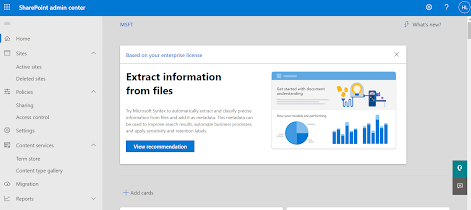Microsoft Azure Notes - Part 3
Continuation of part 1 and part 2 and here the part 3 notes on Azure.
Build a cloud governance strategy on Azure
Control access to
cloud resources by using Azure role-based access control
Instead of defining the detailed access requirements for each
individual, and then updating access requirements when new resources are
created, Azure enables you to control access through Azure role-based access control (Azure RBAC).
Azure provides built-in roles that describe common access rules
for cloud resources. You can also define your own roles. Each role has an
associated set of access permissions that relate to that role. When you assign
individuals or groups to one or more roles, they receive all of the associated
access permissions.
How is role-based access control applied to resources?
Role-based access control is applied to a scope, which is a
resource or set of resources that this access applies to.
Scopes include:
·
A management group (a collection of multiple subscriptions).
·
A single subscription.
·
A resource group.
·
A single resource.
Observers, Users
managing resources, Admins,
and Automated
processes illustrate the kinds of users or accounts that would
typically be assigned each of the various roles.
When you grant access at a parent scope, those permissions are
inherited by all child scopes. For example:
·
When you assign the Owner role to a user
at the management group scope, that user can manage everything in all
subscriptions within the management group.
·
When you assign the Reader role to a group
at the subscription scope, the members of that group can view every resource
group and resource within the subscription.
·
When you assign the Contributor role to an
application at the resource group scope, the application can manage resources
of all types within that resource group, but not other resource groups within
the subscription.
·
Allow one user to manage VMs in a subscription and another user
to manage virtual networks.
·
Allow a database administrator group to manage SQL databases in
a subscription.
·
Allow a user to manage all resources in a resource group, such
as virtual machines, websites, and subnets.
·
Allow an application to access all resources in a resource
group.
How is Azure RBAC enforced?
Azure RBAC is enforced on any action that's initiated against an
Azure resource that passes through Azure Resource Manager. Resource Manager is
a management service that provides a way to organize and secure your cloud
resources.
You typically access Resource Manager from the Azure portal,
Azure Cloud Shell, Azure PowerShell, and the Azure CLI. Azure RBAC doesn't
enforce access permissions at the application or data level. Application
security must be handled by your application.
RBAC uses an allow model. When you're assigned a role, RBAC allows you to perform certain actions, such as read, write, or delete. If one role assignment grants you read permissions to a resource group and a different role assignment grants you write permissions to the same resource group, you have both read and write permissions on that resource group.
Who does Azure RBAC apply to?
You can apply Azure RBAC to an individual person or to a group.
You can also apply Azure RBAC to other special identity types, such as service
principals and managed identities. These identity types are used by
applications and services to automate access to Azure resources.
Tailwind Traders has the following teams with an interest in
some part of their overall IT environment:
·
IT Administrators This team has ultimate ownership of technology
assets, both on-premises and in the cloud. The team requires full control of
all resources.
·
Backup and Disaster Recovery This team is responsible for
managing the health of regular backups and invoking any data or system
recoveries.
·
Cost and Billing People in this team track and report on
technology-related spend. They also manage the organization's internal budgets.
· Security Operations This team monitors and responds to any technology-related security incidents. The team requires ongoing access to log files and security alerts.
How do I manage Azure RBAC permissions?
You manage access permissions on the Access control (IAM) pane
in the Azure portal. This pane shows who has access to what scope and what
roles apply. You can also grant or remove access from this pane.
The following screenshot shows an example of the Access control (IAM) pane for a resource group. In this example, Alain Charon has been assigned the Backup Operator role for this resource group.


Comments
Post a Comment